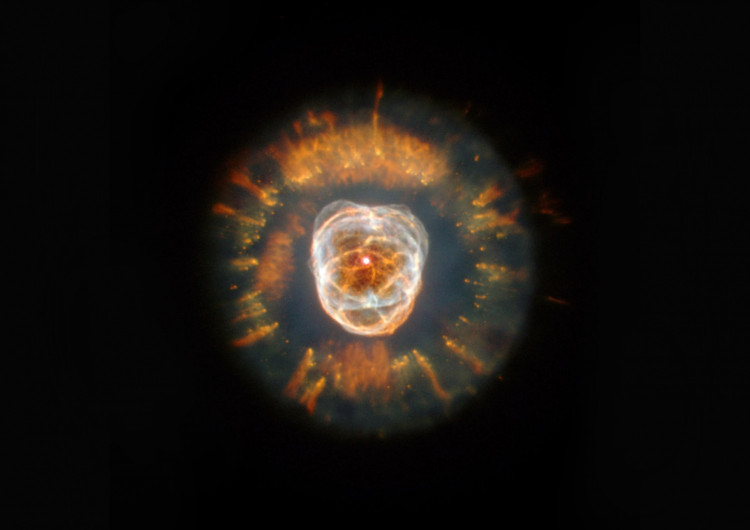Earlier in 2021, NASA commemorated Hubble's 31st birthday by releasing a previously unseen image of the dangerously unstable star AG Carinae. According to a recent blog post on NASA's official website, researchers have taken another look at the star to give distinct views from 2020 and 2014, revealing an unusual glimpse into the last gasps of a dying star.
Because of the brightness of its hot and blue light, NASA designated AG Carinae as a Luminous Blue Variable. Such stars are rare because only a small number of them develop to be so huge.
AG Carinae erupted with a shell of gas and dust in the photo. NASA went into great depth about the events surrounding the star.
Dual nature
These #HubbleFriday views show different aspects of the expanding shell of gas and dust surrounding the star AG Carinae.
This nebula is about five light-years wide and 10,000 years old! Learn more and try our interactive image slider: https://t.co/MiE4HtwRgc pic.twitter.com/CmfZNiNqgS — Hubble (@NASAHubble) September 17, 2021
NASA noted in the photo above that the red shell is caused by ionized hydrogen and nitrogen emissions. The dust that sparkles around the core and is reflected by starlight is depicted in the second shot with a blue ring.
The nebula as a whole is around five light-years wide, which is the distance between the Sun and the next nearest star, Proxima Centauri.
According to NASA, the nebula's circular formation is caused by a galactic tug-of-war between AG Carinae's gravity and radiation, which will continue until the star reaches a stable condition.
Gravity pushes neighboring stellar material inward as the star loses radiation. This causes the star to heat up, causing the energy to be ejected explosively, resulting in the beautiful rings. There are no other stars in the region between AG Carinae and its outer rings. During the explosion, all of the stuff in between is neatly evacuated.
The nebula ring around AG Carinae is not exactly spherical. Astronomers believe that intense star winds altered the shape of the object during an explosion.
The Hubble Telescope measurements of the star in 2020 and 2014 were used to examine and explain the astronomical event. The image was collected with Hubble's Wide Field Planetary Camera 2, which was installed in 1994.
Despite being several decades old, Hubble continues to make some unique and interesting space discoveries.
The James Webb Telescope, Hubble's successor, is 100 times more powerful and has a far larger mirror than Hubble.
NASA announced on Sept. 8 that the James Webb Space Telescope will now launch on Dec. 18, 2021. After Webb successfully passed a rigorous testing program, the agency announced a new target launch date.






